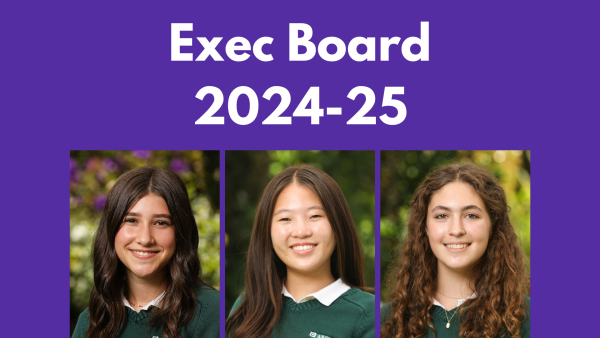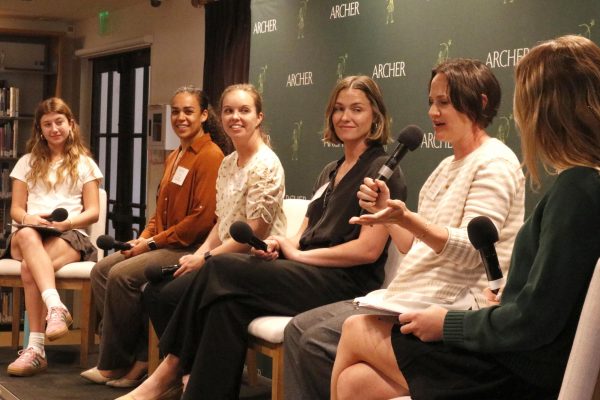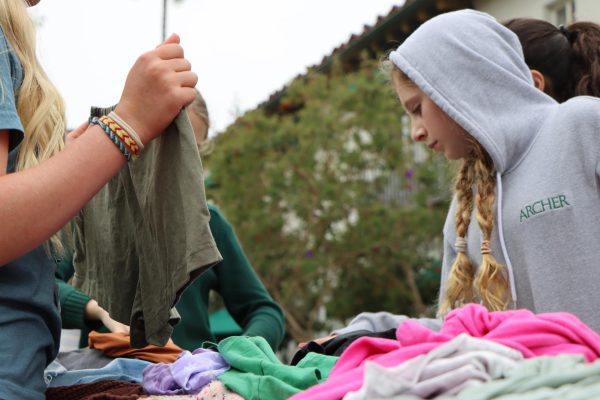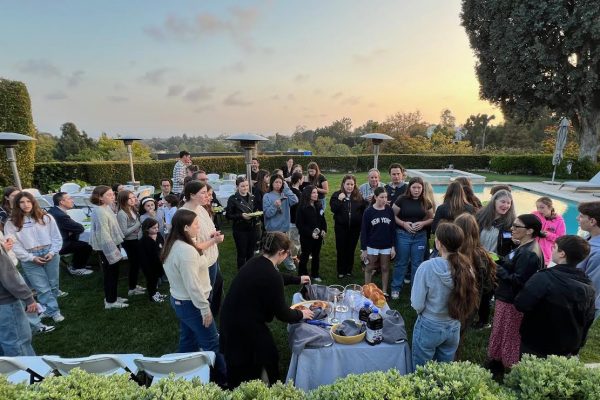A, B, C…G Block? Planning and overview of the 2021-2022 schedule
Photo credit: Thea Leimone
The new 2021-2022 schedule template features the new rotation systems, class timing and additional periods. A document with the template was sent out to the student body so they could plan out their classes and plans for the new FLX Block and 8-day rotation.
September 7, 2021
The 2021-2022 school year has begun. Students crowd the halls clutching their printed out schedules with a grid of brightly colored squares. The grid however, is different from years past; following a year of remote learning filled with asynchronous classes, practicum days and longer class times, a new schedule is being implemented to the Archer community. This year there is a later start, H-block (an eighth class block in the rotation) and eight-day rotation. This year’s schedule differs from the previous X-Block and seven-day rotation from the previous on-campus schedule.
Planning for the new schedule began in the spring of the 2020-2021 school year and was led by English teacher Kristin Taylor and Associate Head of School for Teaching & Learning Karen Pavliscak along with Director of Academic Operations Kasey Nott. A teacher from each department, students and Archer parents contributed to the planning with feedback for potential scheduling.
“We went through a pretty exhaustive process where we were collecting feedback from student groups, faculty, administrators and families,” Director of Academic Programs Reed Farley said. “So we used those needs and desires and crafted a schedule that we hope supports everyone’s learning and well-being.”
A brief survey was sent to parents, students and all faculty. The results were used in conjunction with research about schedules from across the country. The schedule task force at Archer looked for what all members of the community wanted in the schedule and what was working best at other schools to create the optimal schedule.
I thought having a chance to connect with other people is really important but also making sure that we have enough time to actually learn.
— Marissa Gendy
“I thought having a chance to connect with other people is really important but also making sure that we have enough time to actually learn,” Executive Board member Marissa Gendy said. “That’s what I said was most important to me. Finding that good balance between, ‘Hey I want to sit with my friends for an hour,’ but I also want to learn, and I want to make sure that’s a priority.”
Survey results revealed that students wanted time for mentorship, free work, academic exploration and connection. Data revealed students desired hourlong classes as many agreed the hour-and-a-half periods from last year’s remote learning were ‘too long’. Additionally, mentorship and class meetings have been given their own designated 30-minute period after the second period of the day.
“The upper schoolers said they really need the time to focus on [their] own projects and co-curriculars and collaboration time, so that stayed about the same, but the middle school programming is slightly different,” Pavliscak said. “I know some students are really excited to have more time for theater, dance, art and some students miss the fun, really whimsical [X-Block] sessions, so we’ll see what we learn next semester when we get their feedback.”
With the next schedule, all upper schoolers have built in free periods. Additionally, a 30-minute later start has been instituted with first period starting at 8:20 a.m. rather than the 7:50 a.m. start prior to remote learning, which meant reworking the class times with less hours in the school day. Students are adjusting to the extra class period times and organizing meetings with the order of blocks.
“I think it’s been a little tricky, especially because everyone’s schedule is continually changing and no one really understands what’s happening,” Gendy said. “It’s really confusing, but I think it’s a good start.”
In previous years, schedules were on a seven-day rotation with a set X-Block during the third block of the day for community connection and work time, and during remote learning. Last year, Fridays were Practicum days, with the goal for students to explore and learn about their passions.. This year, US-FLX Block has similar goals as X-Block and Practicum, which no longer exist, and now rotates through the schedule on the D-Block for US and G-Block for MS. It provides time for work, along with US-FLX classes such as the Math Team and Science Fair, and for student organization meetings as well.
“Right now we’re just taking it for a test drive. Today was the FLX Block for middle school, and checking with students, they were gardening — we’re gonna do farm-to-table with the servery. We also had creative writing classes happening,” Pavliscak said. “We had dance and art [and] theater students who were engaged in classes and Inven Team [met during US-FLX Block]. So I think all sixth graders would agree: Today was a real success, so we’ll see what tomorrow brings.
Today was a real success, so we’ll see what tomorrow brings.”
— Karen Pavliscak
About 15 different schedule options were considered and reviewed with teachers and departments. Time for learning, processing and community time were prioritized in the decision-making process.
“I hope students can connect with each other. [That they can] do their homework during the day more,” Farley said. “I hope students will participate more in after school activities. I hope students will put their wellness and their happiness first.”




















Jennifer Dohr • Sep 8, 2021 at 10:03 am
Thank you, Thea, for such an informative look at the new schedule. I think we’re all still confusing Days, Blocks, and Periods, but we’ll get there! And I’m sure we can all count on The Oracle for an article down the road on student and faculty feedback once we’ve given the new schedule a real run.